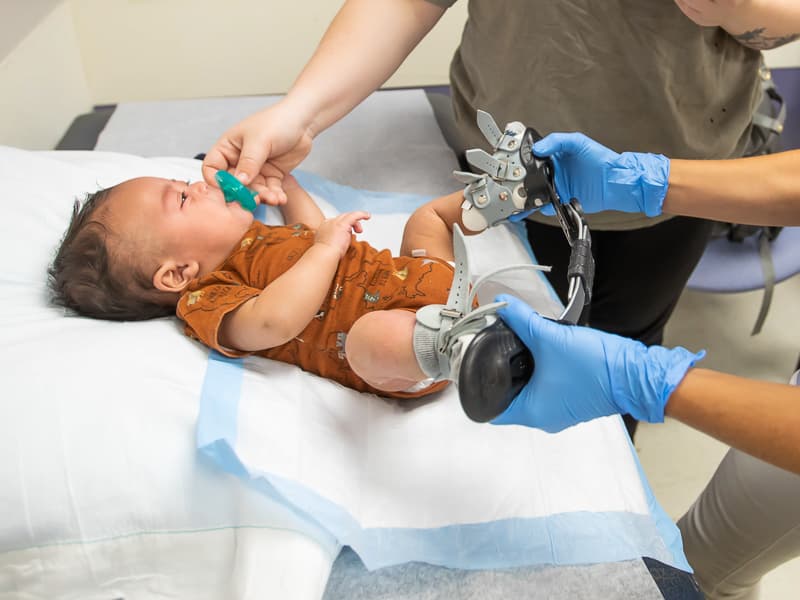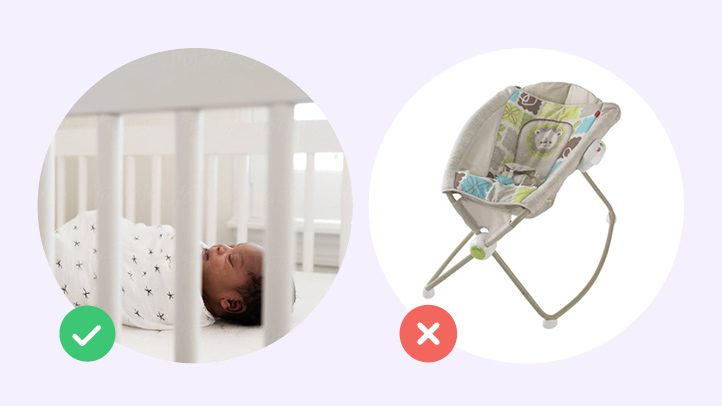How Long After Baby Engaged is Labour: Unlocking the Mystery
After a baby drops and becomes engaged, it can take two to four weeks for labor to begin, although this timeline can vary. Some babies may not engage until right before labor.
In the last weeks before birth, the baby’s head should move down into the pelvis, indicating engagement. Going for gentle walks can help encourage the baby into a good position for birth and stimulate contractions. Engagement does not follow a specific schedule and can differ with each pregnancy.
First babies tend to engage in the last weeks before birth.
Understanding The Engagement Of Baby During Pregnancy
When a baby engages, or moves into the engaged position, it can take two to four weeks before the process of labor begins. However, the length of time will vary between individuals, and in some cases, a baby might not engage until right before labor.
What Is Baby Engagement?
Baby engagement, also known as the engagement of the baby’s head, refers to the process when the baby’s head moves down into the pelvis in preparation for labor. It is an important milestone in pregnancy and occurs during the last weeks before birth.
Signs And Symptoms Of Baby Engagement
There are several signs and symptoms that indicate baby engagement:
- Feeling increased pressure in your pelvic area
- Relief from shortness of breath as the baby’s head moves away from your ribcage
- Increased frequency of urination as the baby’s head rests on your bladder
- A change in the shape of your belly, as it may appear lower and more rounded
- Back pain and discomfort may increase
Importance Of Baby Engagement In The Labor Process
Baby engagement plays a crucial role in the labor process. Once the baby’s head is fully engaged, it signifies that the baby is in the optimal position for birth. It allows the baby’s head to descend into the birth canal, putting pressure on the cervix and helping it to dilate. This ensures a smoother and more efficient labor process.
Baby engagement also helps to ensure that the baby’s head is in the right position for birth, reducing the risk of complications such as a posterior position or a prolonged labor.
Factors Affecting The Timing Of Labor After Baby Engagement
When it comes to the timing of labor after baby engagement, there are several factors that can influence when this process begins. Understanding these factors can help expecting mothers prepare for the arrival of their little one. Let’s explore some key factors that affect the timing of labor after baby engagement:
Individual Variations In The Time Between Engagement And Labor
Every pregnancy is unique, and the time between engagement and labor can vary significantly from person to person. While some women may experience labor shortly after their baby engages, others may need to wait for several weeks. Therefore, it is important to remember that each woman’s body works on its own schedule, and there is no set timeframe for labor after baby engagement.
How Gestational Age Can Influence Labor Onset After Engagement
Gestational age also plays a role in determining when labor will begin after baby engagement. In general, the closer a woman is to her due date, the higher the chances of labor starting sooner after engagement. This is because the body is naturally preparing for childbirth as the pregnancy progresses. However, it is important to note that even if baby engagement occurs earlier in the pregnancy, it does not necessarily mean that labor will start immediately.
Impact Of Previous Pregnancies On The Timing Of Labor After Engagement
Past pregnancies can have an impact on how soon labor starts after baby engagement. For women who have given birth before, the body may be more familiar with the labor process, and labor could potentially begin sooner after engagement compared to first-time mothers. However, this is not always the case, as each pregnancy can be different even for experienced mothers.
In conclusion, the timing of labor after baby engagement varies from person to person and can be influenced by individual variations, gestational age, and the impact of previous pregnancies. It is important for expectant mothers to stay patient and prepared as they anticipate the arrival of their precious bundle of joy.
Assessing The Progression Of Labor After Baby Engagement
Assessing the progression of labor after baby engagement is crucial for both expectant mothers and medical professionals. Understanding the stages of labor in relation to baby engagement, monitoring techniques, and medical interventions can help determine the optimal time for delivery. This not only ensures the safety and well-being of both mother and baby but also provides valuable insights into the overall progress of labor.
Stages Of Labor And Their Relationship To Baby Engagement
The stages of labor can be divided into three distinct phases: early labor, active labor, and transitional labor. During early labor, the cervix begins to dilate and thin out. This is typically when the baby starts to engage or descend into the pelvis. As labor progresses into active labor, contractions become stronger and more frequent. The cervix continues to dilate, and the baby’s head moves further into the birth canal. Finally, during transitional labor, the cervix dilates fully, and the baby’s head becomes fully engaged.
Monitoring Techniques To Determine Labor Progression After Engagement
Various monitoring techniques can be employed to assess the progression of labor after baby engagement. One commonly used method is vaginal examination, where the healthcare provider checks the cervix for dilation and effacement. Another technique is the use of fetal heart rate monitoring to ensure the baby’s well-being during labor. This can be done externally using a Doppler device or internally via a fetal scalp electrode. Additionally, the regular measurement of contractions and the assessment of the mother’s pain level can provide valuable insights into labor progression.
Medical Interventions To Induce Or Augment Labor After Baby Engagement
In some cases, medical interventions may be necessary to either induce or augment labor after baby engagement. Induction methods such as the administration of synthetic hormones or the use of cervical ripening agents can help initiate labor when it is not starting spontaneously. Augmentation techniques, on the other hand, aim to strengthen and regulate contractions when labor progress is slow. This can involve the use of oxytocin medication or artificial rupture of membranes. However, these interventions are only recommended when the health and safety of the mother or baby are at risk.
By understanding the stages of labor, utilizing monitoring techniques, and considering appropriate medical interventions, healthcare providers can effectively assess the progression of labor after baby engagement. This knowledge enables them to make informed decisions regarding the timing and management of labor, ensuring the best possible outcome for both mother and baby.
Supporting Natural Labor Progression After Baby Engagement
After a baby drops and becomes engaged, it can take two to four weeks before the process of labor begins. However, this timeline can vary between individuals, and in some cases, a baby might not engage until right before labor.
Tips For Encouraging Labor To Start Naturally After Baby Engagement
After a baby drops or enters the engaged position, it is common for labor to begin within two to four weeks. However, the duration may vary for different individuals. In some cases, a baby might not engage until right before labor. If you are eager to encourage labor to start naturally after baby engagement, here are some helpful tips:
- Stay active: Engaging in regular exercise and movement can help promote labor progression. Walking is a gentle form of exercise that can encourage the baby’s head to become engaged and stimulate contractions.
- Maintain a healthy diet: Consuming nourishing foods, such as fresh fruits, vegetables, and whole grains, can support your overall well-being and potentially promote labor.
- Stay hydrated: It is important to drink plenty of water to stay hydrated, which can help optimize uterine function and promote contractions.
- Try herbal remedies: Some natural remedies, such as red raspberry leaf tea or evening primrose oil, may be beneficial in supporting a healthy labor process. However, consult with your healthcare provider before trying any new herbal remedies.
Exercise And Movement To Promote Labor After Engagement
Regular exercise and movement during the waiting period after baby engagement can support the progression of labor. Here are some exercises and activities you can incorporate into your routine:
- Prenatal yoga: Yoga poses specifically designed for pregnant women can help relieve tension and encourage optimal positioning of the baby.
- Swimming: Swimming is a low-impact exercise that can help relieve pressure on the joints and promote relaxation.
- Pelvic tilts: Pelvic tilts are gentle exercises that can help strengthen the pelvic muscles and encourage the baby to move into a favorable position for labor.
- Squatting: Squatting exercises can help open up the pelvic area and encourage the baby’s descent.
Relaxation Techniques And Stress Reduction Methods During The Waiting Period
While waiting for labor to start naturally after baby engagement, it is essential to prioritize relaxation and reduce stress. Here are some techniques and methods to consider:
- Meditation: Practicing meditation can help calm the mind, reduce anxiety, and promote a positive mindset during this waiting period.
- Deep breathing exercises: Deep breathing exercises can help relax the body, reduce stress, and promote a sense of calmness.
- Massage: Gentle massages can help alleviate muscle tension, improve circulation, and provide a relaxing experience.
- Listening to soothing music: Listening to calming music or nature sounds can create a peaceful environment and contribute to relaxation.
Remember, supporting natural labor progression after baby engagement involves maintaining a healthy lifestyle, staying active, and prioritizing relaxation. However, every pregnancy is unique, and it is essential to consult with your healthcare provider for personalized guidance.
When To Seek Medical Assistance After Baby Engagement
After a baby has engaged, it can take anywhere from two to four weeks for the process of labor to begin. However, this timeline can vary between individuals, and in some cases, a baby may not engage until right before labor.
Indications That Prompt Medical Evaluation After Baby Engagement
After your baby engages, it is important to closely monitor any changes or symptoms that may indicate the need for medical assistance. Here are some indications that should prompt you to seek medical evaluation:
- Unusual or severe abdominal pain: If you experience severe abdominal pain that is persistent or worsening, it is important to consult with your healthcare provider, as this may be a sign of a complication.
- Decreased fetal movement: A noticeable decrease in your baby’s usual movement patterns can be a cause for concern. It is recommended to contact your healthcare provider if you experience a significant reduction in fetal movement.
- Abnormal vaginal bleeding/discharge: Any unusual bleeding or discharge should be brought to the attention of your healthcare provider, as it may indicate a potential complication.
- Leaking of amniotic fluid: If you suspect that your amniotic fluid is leaking, contact your healthcare provider immediately. This could be a sign that your water has broken and labor may be impending.
Understanding The Potential Risks And Complications Associated With Delayed Labor After Engagement
While it is normal for some women to experience a delay between baby engagement and the onset of labor, in some cases, a delayed labor can pose risks and complications.
Some potential risks and complications associated with delayed labor after engagement include:
| Potential Risks and Complications | Description |
|---|---|
| Intrauterine infection: | The longer a baby remains engaged without labor starting, the higher the risk of developing an infection. |
| Umbilical cord compression: | If the baby’s head remains engaged for an extended period, there is a risk of umbilical cord compression, which can affect the baby’s oxygen supply. |
| Placental abruption: | Delayed labor can increase the risk of placental abruption, where the placenta partially or completely separates from the uterus before delivery. |
| Fetal distress: | In some cases, a prolonged delay between baby engagement and labor can lead to fetal distress, which requires immediate medical attention. |
The Role Of Healthcare Providers In Assessing And Managing Delayed Labor
When faced with delayed labor after baby engagement, it is crucial to involve your healthcare provider for proper assessment and management. They play a vital role in ensuring the well-being of both you and your baby.
- Monitor your condition: They will closely monitor your health and the progress of labor to identify any potential complications.
- Suggest appropriate interventions: Based on their assessment, they may recommend interventions to stimulate labor or manage any complications that may arise.
- Provide necessary support: Your healthcare provider will offer guidance, reassurance, and support throughout the labor process, ensuring a safe and positive experience.
- Coordinate with specialists: In case of complex or high-risk situations, your healthcare provider may involve other specialists, such as obstetricians or neonatologists, to provide the best care possible.

Credit: www.umc.edu
Frequently Asked Questions For How Long After Baby Engaged Is Labour
How Long Can Baby Be Fully Engaged Before Labour?
Once a baby is fully engaged, labor can begin within two to four weeks, although this may vary for each person. In some cases, a baby may not engage until right before labor. Walking daily can help encourage the baby to engage and stimulate contractions.
How Long After Engagement Do You Go Into Labor?
After engagement, labor can begin within two to four weeks, but it varies for each person. In some cases, the baby may not engage until just before labor.
How Long Does It Take For Baby’s Head To Be Fully Engaged?
It can take two to four weeks for a baby’s head to be fully engaged before labor. However, this timeframe may vary for each individual. In some cases, the baby may not engage until just before labor begins.
How Do I Bring My Baby Into Labor Once Engaged?
To naturally bring your baby into labor once engaged, try taking a gentle walk every day. This helps gravity play its role in encouraging the baby’s head to engage and stimulate contractions. Remember that the length of time between engagement and labor can vary, ranging from a few weeks to right before labor.
Conclusion
When it comes to how long after baby engaged is labor, there is no specific timeline. In some cases, it can take two to four weeks before the process of labor begins after the baby drops or enters the engaged position.
However, it is important to remember that every pregnancy is different, and the length of time will vary between individuals. Some babies may not engage until right before labor. So, it’s best to consult with your healthcare provider for personalized guidance.
Remember, each labor journey is unique. Trust in your body and the medical professionals supporting you during this exciting time.








